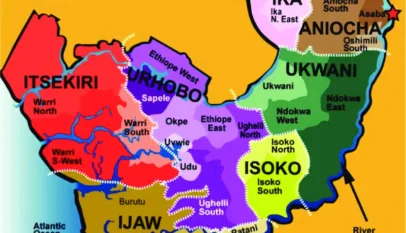
By Oghenekevwe Kofi
Passengers aboard Cathay Pacific Flight 880 had a truly unique way of ushering in 2025—by celebrating New Year’s Day twice. The flight, which departed Hong Kong International Airport just past midnight on January 1, 2025, took off into the night, heading eastward across the vast Pacific Ocean toward the United States.
After a journey of approximately 12 hours and multiple time zone crossings, the aircraft touched down at Los Angeles International Airport (LAX). Despite the 16-hour time difference between Hong Kong and LA, the flight arrived at LAX at 8:30 p.m. on December 31, 2024—around 20 minutes ahead of schedule.

Photo: details of the flight
As the plane neared the International Date Line, time itself seemed to warp. Crossing this invisible boundary caused the calendar to flip backwards, pushing passengers from New Year’s Day into the evening of December 31, 2024. This phenomenon is an inevitable feature of transpacific flights, where the International Date Line separates one day from the next, making it possible for flights heading eastward to “gain” a day.
While this may sound like a mere quirk of time zones, the effects were felt on a deeper level for those aboard. Not only did they experience a shift in time, but they also received the rare opportunity to celebrate New Year’s Eve twice.
Passengers, many of whom were returning from holidays in Asia or beginning new adventures in the U.S., found themselves experiencing an unexpected encore of the holiday. They relished the chance to revisit the excitement of ringing in the New Year, only to find it still December 31 when they landed in Los Angeles.
For some, the event provided an interesting reminder of the complexities of time and travel. “How many people can say they celebrated New Year’s Eve twice in the same night?” mused one traveller, expressing both amazement and delight at the coincidence.
Though the science behind this double celebration is simple—thanks to the time shifts created by the International Date Line—the emotional impact was profound. Passengers found themselves reliving the magic of the New Year, with festivities still to be had when they arrived in Los Angeles. As the world rang in 2025, those aboard Flight 880 had the rare privilege of welcoming the New Year not once but twice, creating lasting memories of an event few will ever replicate.
For some travellers, this experience served as a reminder of how time zones shape our perceptions of time, making the world feel a little smaller and more interconnected. With the shifting of the calendar and the overlap of celebrations, Flight 880’s journey became a reminder of the fascinating intersections between geography, time, and human experience.
This occurrence, though unusual, is not unheard of for transpacific flights and highlights the complex relationship between global timekeeping and the modern travel experience. As air travel continues to evolve, these kinds of time-bending moments offer passengers more than just a change of scenery—they offer a chance to step outside of time, even if only for a brief moment.






























